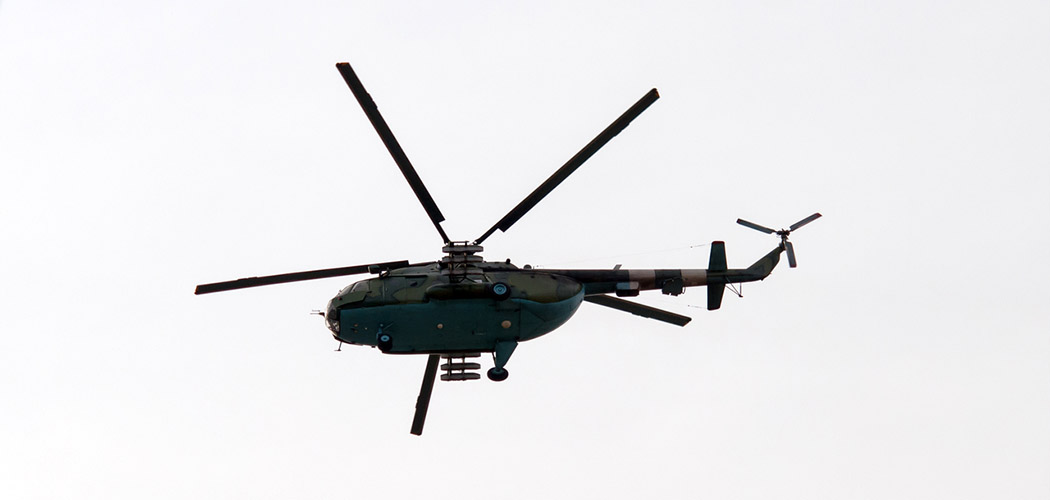By Bill Carson | February 8, 2021
As we have chronicled in many posts on our news page, Sikorsky’s Black Hawk helicopter is a superior transport vehicle that offers myriad benefits and applications for both military and commercial purposes.
One variation of the Black Hawk that we haven’t examined yet, though, is the Sikorsky SH-60 Seahawk helicopter, an industry-leading maritime helicopter. Read on to learn key aspects about the Sikorsky Seahawk.

Needing a replacement for the Kaman SH-2 Seasprite, the United States Navy began to explore options in the 1970s. Among the possibilities the Navy considered included the Boeing Vertol YUH-61 and the Sikorsky YUH-60, along with others from Kaman, MBB, Westland, and Bell.
After thorough review, the S-70B multifunctional medium twin helicopter design from Sikorsky was selected in 1978, with SH-60B Seahawk as the name being chosen. When it comes to the Seahawk helicopter vs. the Black Hawk, the Seahawk is more complex than the versions used by the Air Force and Army, as it has nearly 20% different components. Initial flights were conducted in 1979, and the Seahawk helicopter was officially introduced in 1984.
Since that time, there have been numerous Seahawk variations released, including the SH-60B Seahawk, the SH-60F Seahawk, the HH-60H Seahawk, the MH-60R Seahawk, and the MH-60S Seahawk, all of which we will provide overviews on below.
Following their adoption by the United States Navy, other countries have incorporated Sikorsky Seahawks into their navies, including:
The applications for the Sikorsky SH-60 Seahawk are varied, and the helicopters have been put to use in many ways since their inception. Some of these applications have included:
As you can see, the applications for the Sikorsky Seahawk are incredibly diverse, making it a major asset of the U.S. Navy, as well as navies around the world.
During the course of its operation, the Seahawk has been made available in numerous iterations, some of which are no longer in operation. Below, we will look at each key Seahawk version and its specific abilities and functionalities.
Very comparable to the UH-60A from Sikorsky, the Sikorsky SH-60B Seahawk additionally featured corrosion protection, T700 engines that were more powerful, two weapon pylons, single-stage oleo main landing gear, and more. The main uses for this specific model were for surface warfare and anti-submarine warfare, and it was deployed on cruisers, destroyers, and frigates primarily.
The SH-60B Seahawk eventually was decommissioned and retired following 32 years of service and 3.6 million hours in April of 2015.
A variation of the Sikorsky Seahawk was begun in 1985 when the Navy was searching for a replacement for its SH-3 Sea King. Utilizing the airframe of the SH-60B, this model was upgraded with avionics of the SH-3H, and later gained the nickname of “Oceanhawk.”
In terms of use, the helicopter was primarily employed for anti-submarine warfare, utilizing AQS-13F dipping sonar. Offensive weapon capability included the option for Mk 46, Mk 50, or Mk 54 torpedoes, along with mounted machine guns.
First flown in 1988, this helicopter variation was utilized during Operation Desert Storm and has served primarily as a combat search and rescue vehicle, a naval special warfare vehicle, and an anti-surface warfare vehicle. With these capabilities, this helicopter has often been called the Rescue Hawk.
By 2016, most iterations of this Seahawk helicopter are no longer in use, with only one squadron currently utilizing the model.
Launched in 1999, this Sikorsky Seahawk combines aspects of the SH-60B model and the SH-60F model, and has been touted as the world’s most advanced maritime helicopter. Primarily used for anti-submarine warfare and search and rescue, this helicopter has been designed to operate from destroyers, cruisers, frigates, and aircraft carriers.
Currently, more than 300 MH-60R Seahawk helicopters are in operation throughout the world, and it offers the lowest life-cycle cost within its class.
To replace the CH-46 Sea Knight, the Navy opted for this model of Seahawk helicopter, with its first flight taking place in 2000. This model is a bit different from other Seahawks, in that it is a hybrid, taking fuselage elements from the S-70A/UH-60 and engines and rotors from the S-70B/SH-60.
Major focuses for this vehicle include medevac, combat search and rescue, vertical replenishment, surveillance and reconnaissance, intelligence, and more. Informally, this helicopter has been nicknamed the Knighthawk.
At Cutting Dynamics, we regularly supply to major aviation companies and their clientele. Some of our offerings for Sikorsky Seahawk and Black Hawk helicopters include our phase maintenance kits and our Black Hawk spare parts.
If you’re in need of key replacement parts, or are searching for a simple color-coded system for your kitting, we can provide. Along with these services for Black Hawks, we can also offer a variety of other essential aerospace services, such as:
Our team at Re:Build Cutting Dynamics wants to ensure that all your questions regarding Patriot missile systems, our product line, and beyond have been answered. With that in mind, feel free to contact us today with any questions you may have, as we look forward to assisting you.